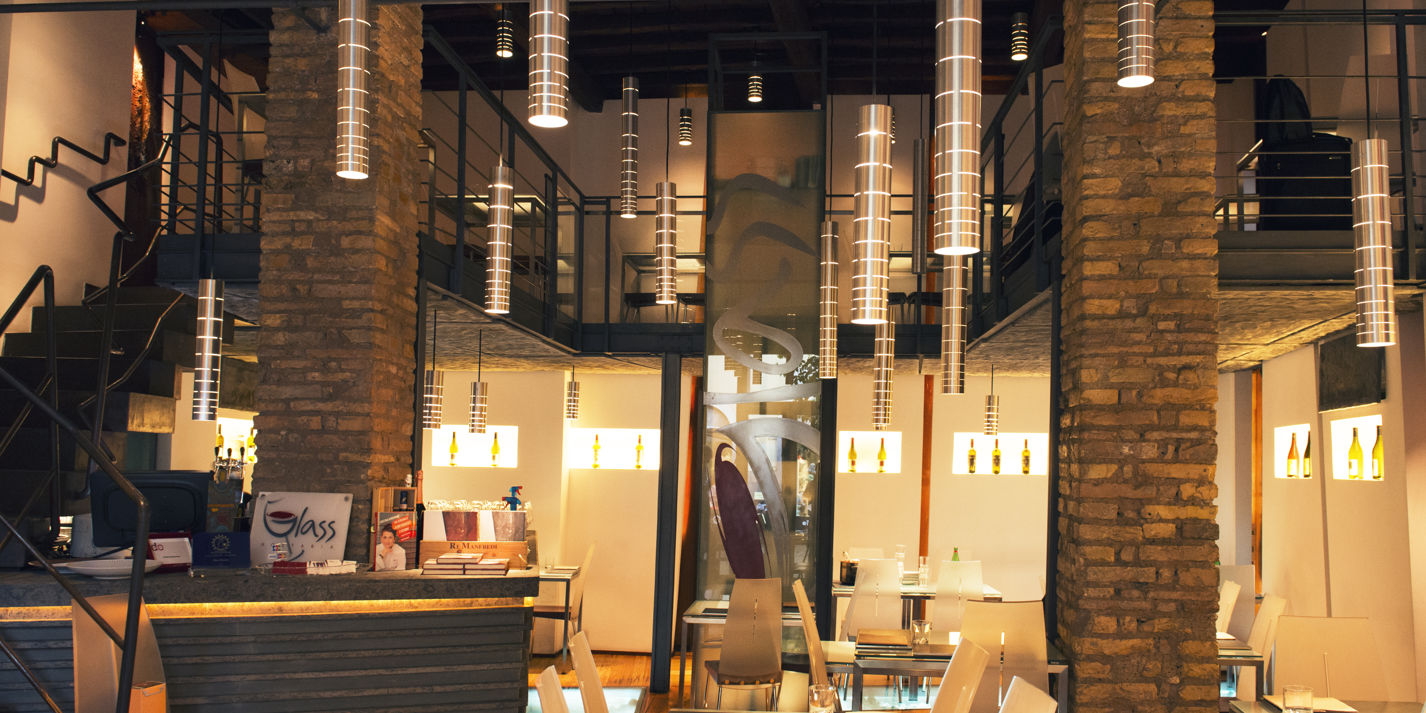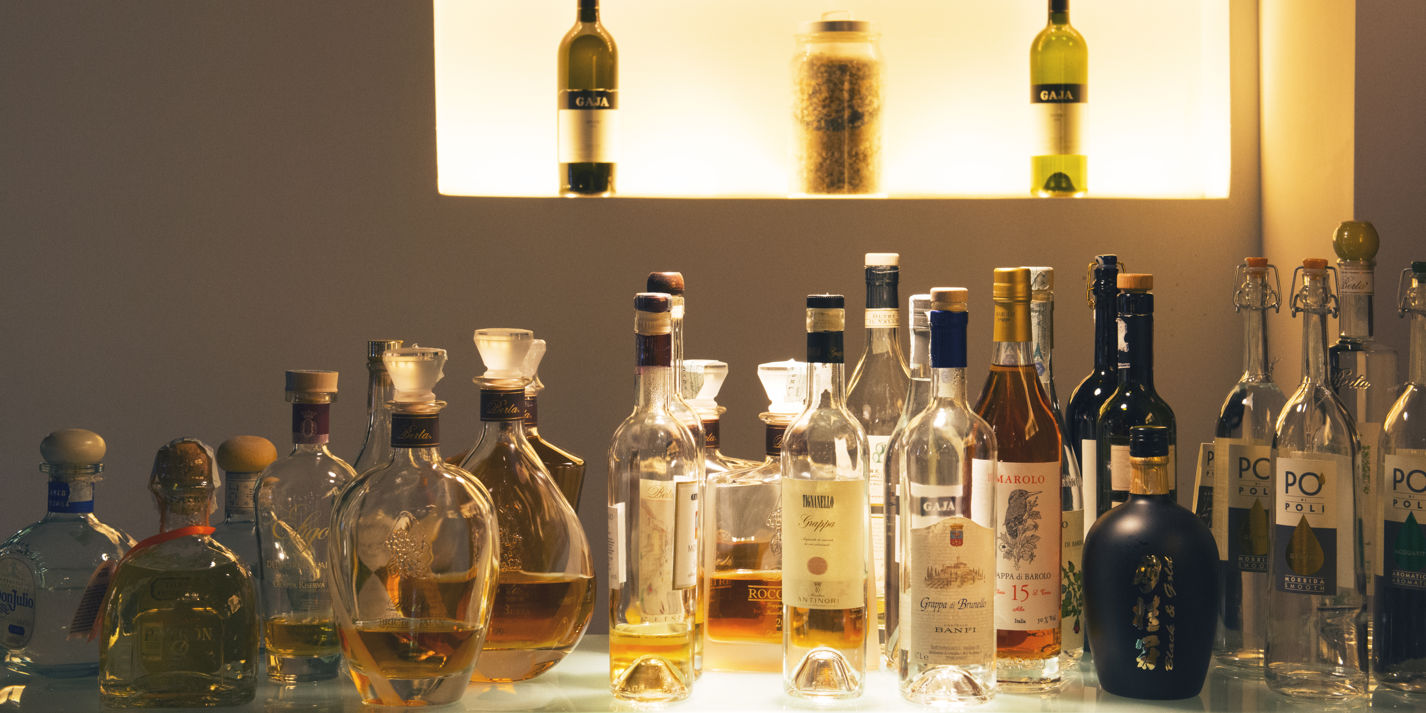Almost as renowned for its design as it is for its food, Glass Hostaria is a culinary fixture of the historic alleyways of Rome. The restaurant itself is a wonderful mix of old and new, and thus reflects perfectly the Trastevere district of the city where it is based. Meaning ‘beyond the Tiber’, Trastevere is an area known for the famed fountain and architecture of the Piazza Trilussa, but also for the lively night-time atmosphere of the many bars and restaurants that line the pedestrian alleyways.
Based at one end of the Vicolo del Cinque, one of the most well-travelled routes between the Piazzas of Trilussa and Santa Maria, Glass Hostaria overlooks the cobbled streets, outdoor chairs and tables, and ivy-clad walls that characterise this neighbourhood. Although the humble exterior befits the location, the restaurant’s interior is another story altogether. Designed by the collaborative efforts of architects and artists Andrea Lupacchini, Marco Filippetti and Alberto Brandolini, the restaurant features ultra-modern elements that allow for an intricate play of light and shadow across the mezzanine floors, yet still showcases some of the building’s original features.
True to its name, glass plays a key role in the aesthetic design. With glass cases embedded in the floors, guests can walk over wine bottles displayed beneath their feet, while lit recesses in the walls highlight further bottles on display. The tables themselves are of frosted glass, and create a striking contrast against the textured panels decorating the walls. The high ceilings are accentuated by futuristic lights hanging over the dining room, helping to give the restaurant a feel of space yet still feeling intimate.
Chef Cristina has added her own touches to the dining room since she joined the restaurant in 2006, picking a lot of the tableware to suit her eclectic style and influences. With a passion for travel, Cristina’s cooking is inspired by both her childhood in Puglia in southern Italy, as well as time spent working in America. The inclusion of ingredients such as prawn crackers (or ‘dragon clouds’ as they’re known in Italy), umeboshi, Sangria, Stilton, sumac and yuzu, to name but a few, highlight the range of flavours and cuisines that feature across the menu, adding an aspect of fusion cooking to the Michelin-starred Italian dishes.
The success of Glass Hostaria under Cristina has led to the opening of a second venue, Romeo Chef and Baker. A more casual affair in terms of food, the decor is no less modern and striking. Located slightly to the north or Glass Hostaria close to Vatican City, Romeo offers salads, antipasti and freshly baked goods to the passing crowds. Cristina will often be found here during the day, and then at Glass Hostaria in the evenings.



